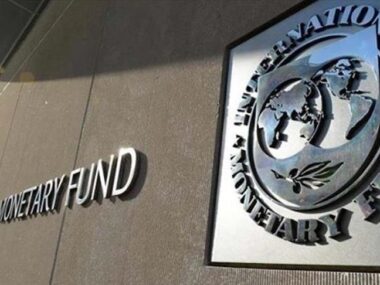Germany’s economy contracted in the past year for the first time since the onset of the Covid-19 pandemic, as revealed by official data on Monday. This development increases the risk of an economic downturn in the broader Eurozone.
According to Germany’s Federal Statistical Office (Destatis), the Gross Domestic Product (GDP) was 0.3% lower in 2023 compared to the previous year. Destatis president Ruth Brand attributed this decline to the challenging economic environment marked by multiple crises. High inflation, though somewhat alleviated, continued to impact the economy, and rising interest rates along with weakened domestic and foreign demand also played a role.
In the fourth quarter, GDP fell by 0.3% compared to the previous quarter, according to preliminary estimates from the statistics office. This followed a period of stagnation in the three months leading up to September, narrowly avoiding a technical recession, defined as two consecutive quarters of declining GDP.
This economic contraction in Germany is concerning for the entire Eurozone since Germany is the largest economy among its 20 member nations.
A survey conducted by the World Economic Forum (WEF) and released in conjunction with its annual meeting in Davos, Switzerland, indicates that over three-quarters of economists expect “weak or very weak growth” in Europe in 2024. Furthermore, more than half of the economists surveyed in November and December anticipate a weakening global economy in the current year.
Saadia Zahidi, the managing director of WEF, highlighted the fragile nature of the current economic environment, as reflected in the survey results.
The Eurozone also faced economic challenges, with a slight output decline in the third quarter of 2023. Final figures for the fourth quarter, expected to be released on January 30, will determine whether the region officially entered a recession towards the end of the year.
A widespread state of weakness.
The decline in German GDP reflects a pervasive weakness throughout the economy, with a particular emphasis on the country’s extensive manufacturing sector. This sector has been adversely affected by several factors, including diminished demand from China, elevated energy costs, and significant interest rate hikes. Within manufacturing, car production and the manufacturing of other transport equipment experienced growth in the past year, but output decreased notably in energy-intensive chemical and metal industries. Overall, industrial production, which is largely dominated by manufacturing, contracted by 2%, according to Destatis. Exports also declined by 1.8%.
Both household and government spending declined, with government spending experiencing a decrease for the first time in nearly two decades. Destatis attributed this reduction primarily to the discontinuation of state-financed Covid-19 measures, including vaccination efforts and compensation for hospitals providing free beds.
After concluding 2023 with negative growth, Germany’s economy faced a rocky start in the new year. A three-day national rail strike over pay and working hours led to travel disruptions. Additionally, farmers staged protests by blocking highways and other roads to voice their opposition to government plans to reduce fuel subsidies. Farmers organized a final demonstration in Berlin, jointly organized with the German trucking industry.
According to Andrew Kenningham, chief Europe economist at Capital Economics, government spending cuts will exert downward pressure on Germany’s economic growth this year. He noted the continuing recessionary conditions that have persisted since the end of 2022 and forecasted zero GDP growth in 2024.
However, there was a positive aspect in the German economic data related to employment. Employment grew by a record 0.7%, equivalent to 333,000 individuals, compared to the previous year, bringing the total number of people employed to 45.9 million. Destatis credited this increase to both foreign workers and more of the domestic population joining the labor force, which offset the dampening effects of Germany’s aging population.











